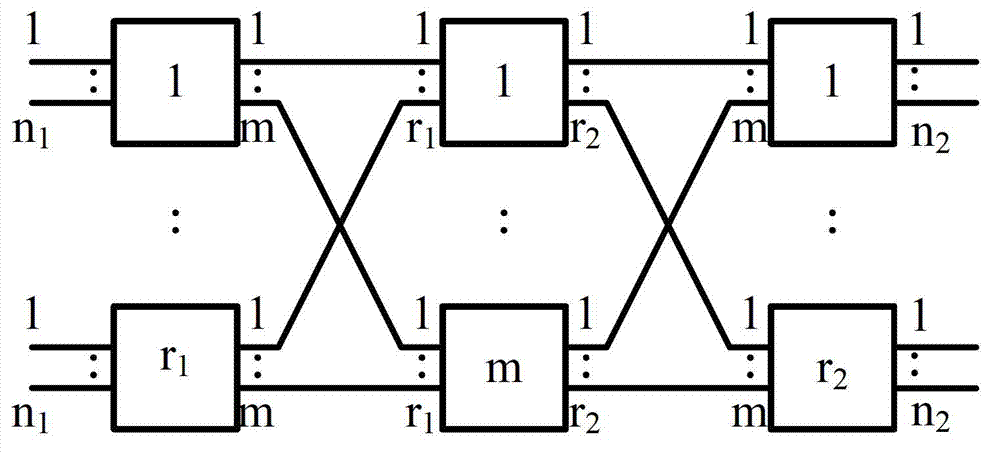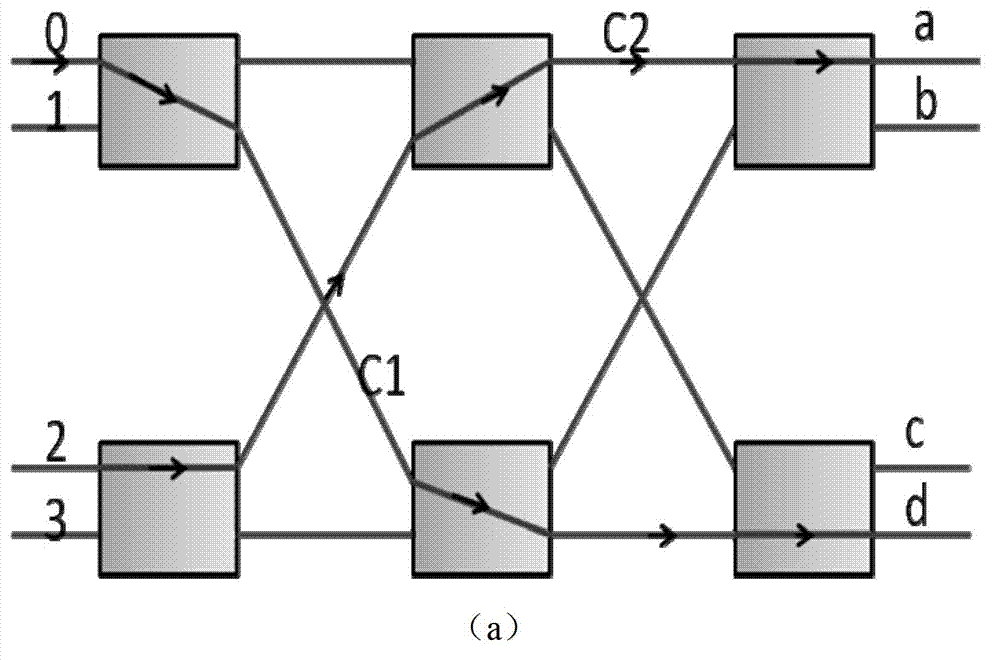Path distribution method in Clos network based on device constraint
A path allocation and network technology, applied in data exchange networks, electrical components, digital transmission systems, etc., can solve problems such as interference, business information changes, and influences, and achieve the effect of improving efficiency and reducing operating time.
- Summary
- Abstract
- Description
- Claims
- Application Information
AI Technical Summary
Problems solved by technology
Method used
Image
Examples
Embodiment
[0046] Figure 5 It is a flow chart of a specific embodiment when the device constraint-based path allocation method in the Clos network of the present invention is tested.
[0047] Such as Figure 5 As shown, the specific implementation process includes:
[0048] Step 501: setting Clos network parameters, including setting the percentage of effective business to business capacity;
[0049] Step 502: Generate valid services according to the parameters set in step 501;
[0050] Step 503: Query valid services, and determine whether the valid services are over, that is, whether there are still valid services that have not yet been calculated; if the valid services have not ended, go to step 504;
[0051] Step 504: Perform path calculation on the valid services of this query.
[0052] Step 505: Determine whether the path calculated in step 504 is blocked; if not blocked, return to step 503 to continue valid service query; if blocked, enter step 506;
[0053] Step 506: call th...
PUM
 Login to View More
Login to View More Abstract
Description
Claims
Application Information
 Login to View More
Login to View More - R&D
- Intellectual Property
- Life Sciences
- Materials
- Tech Scout
- Unparalleled Data Quality
- Higher Quality Content
- 60% Fewer Hallucinations
Browse by: Latest US Patents, China's latest patents, Technical Efficacy Thesaurus, Application Domain, Technology Topic, Popular Technical Reports.
© 2025 PatSnap. All rights reserved.Legal|Privacy policy|Modern Slavery Act Transparency Statement|Sitemap|About US| Contact US: help@patsnap.com



